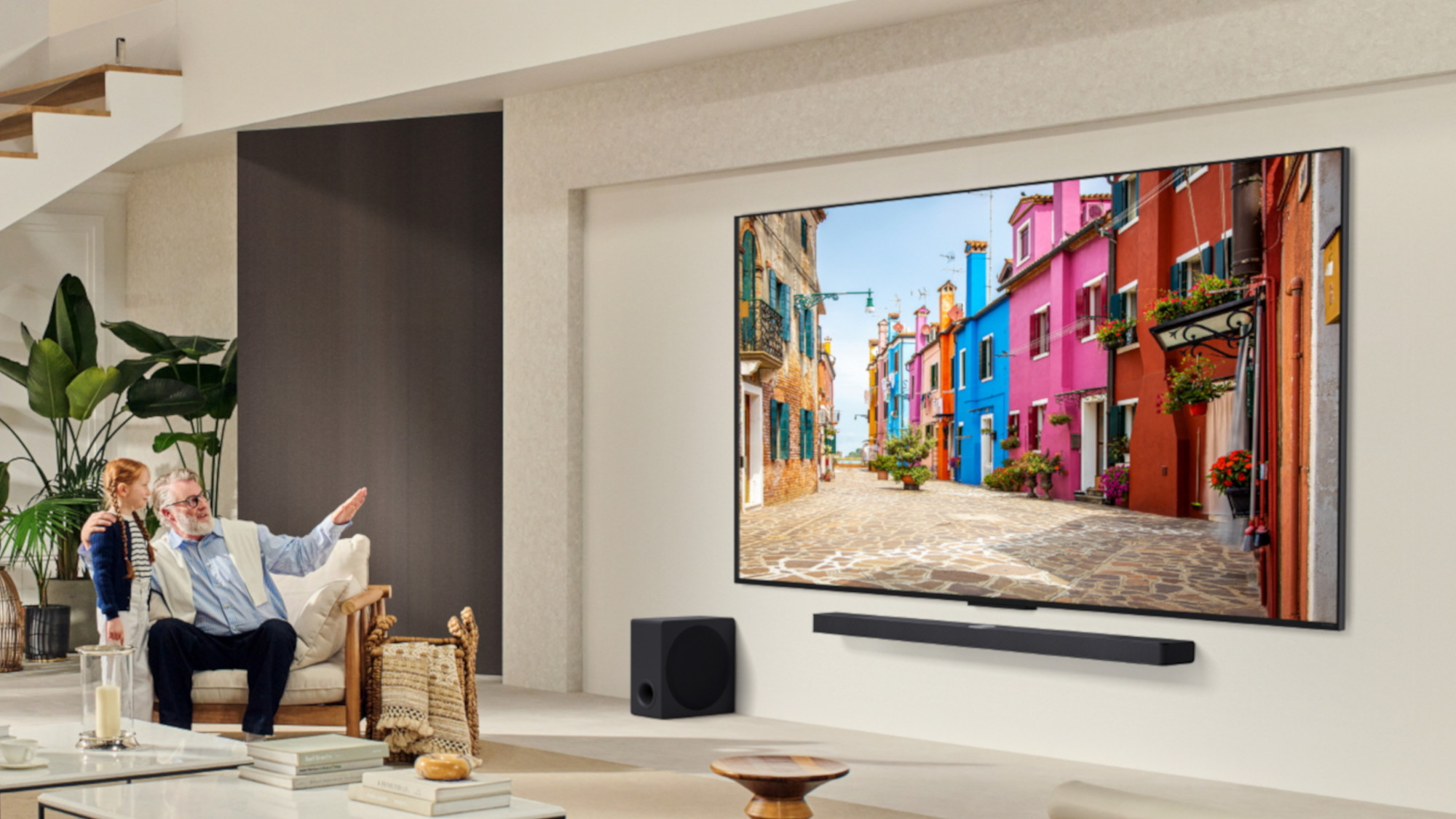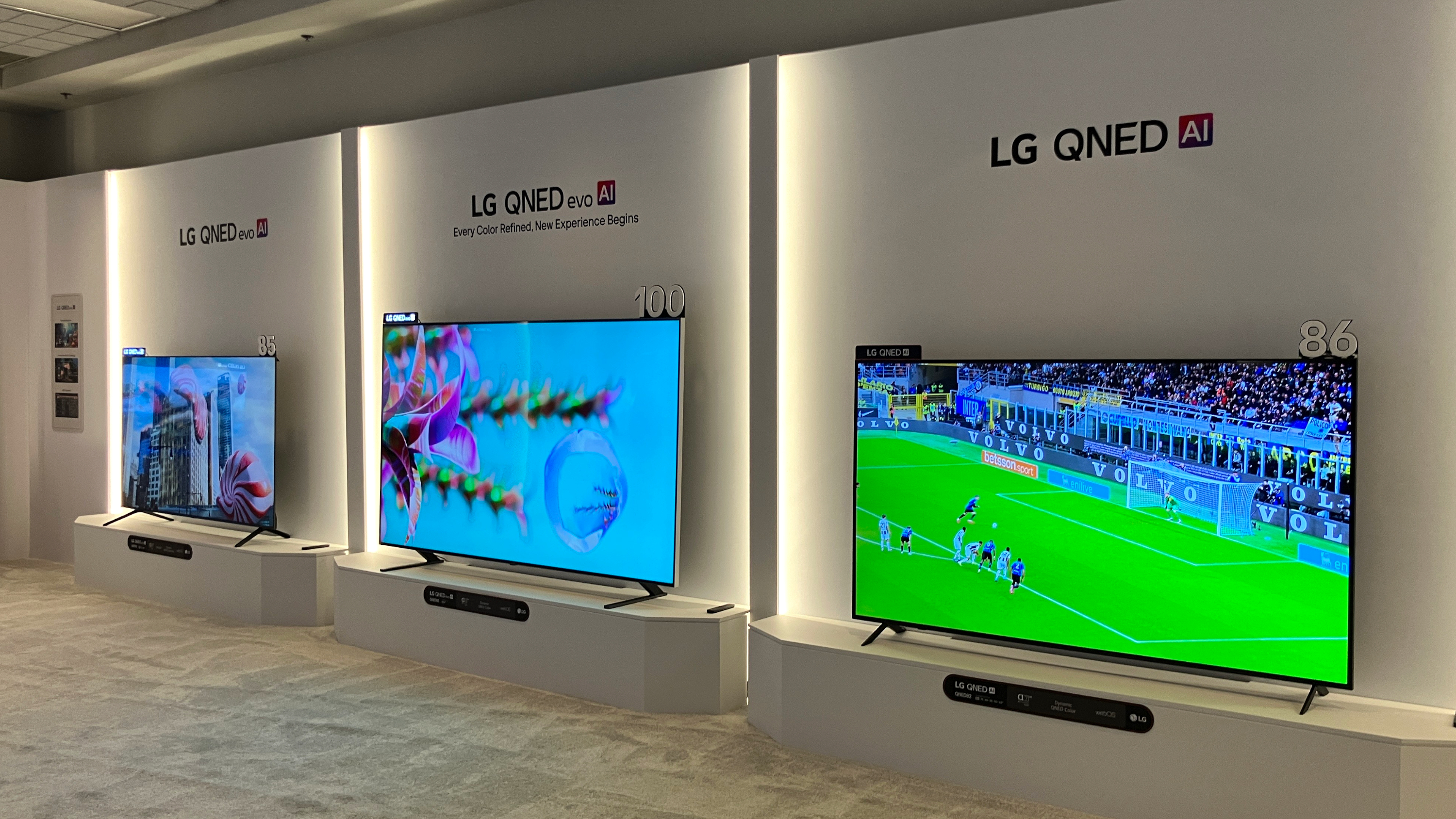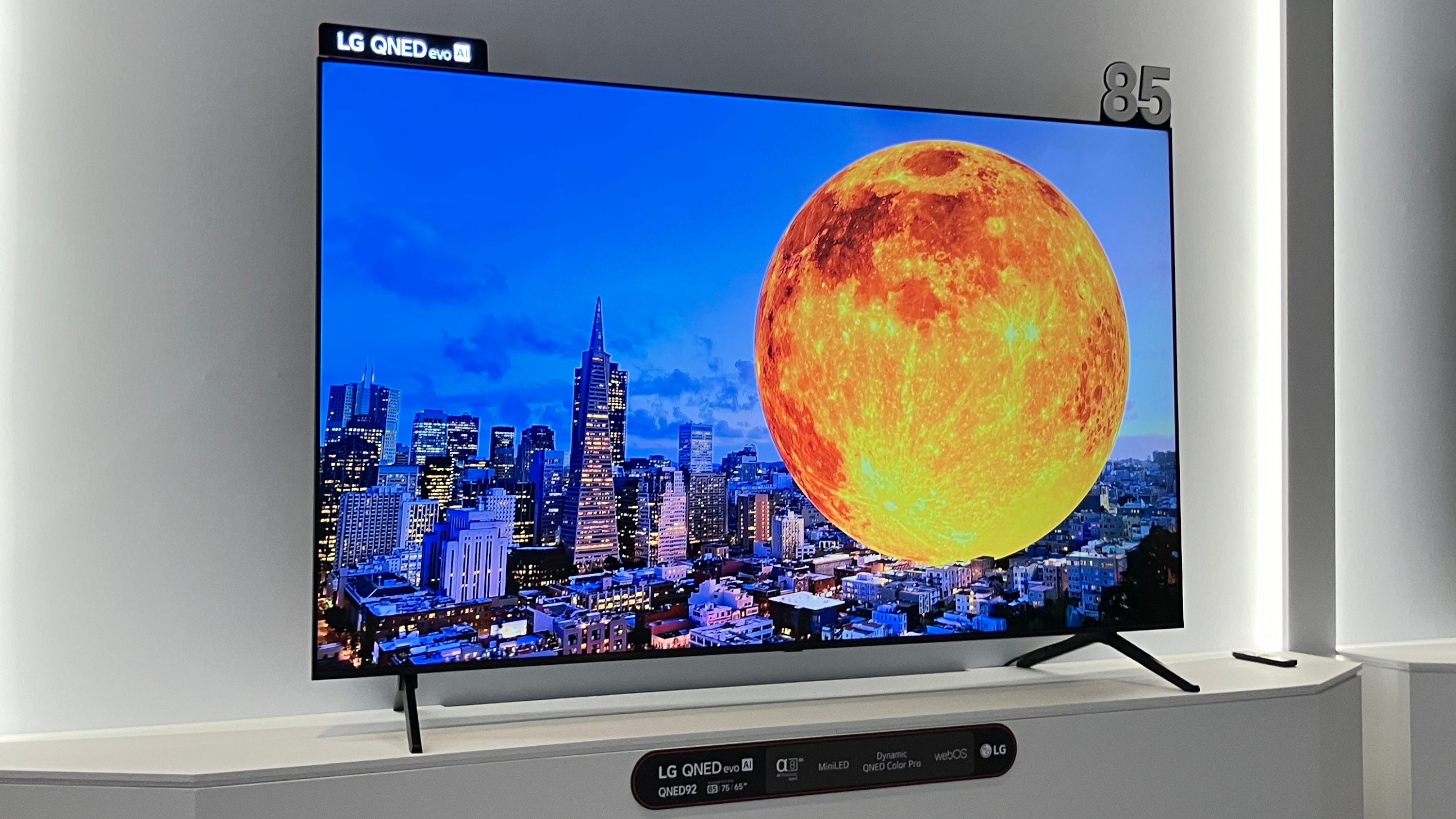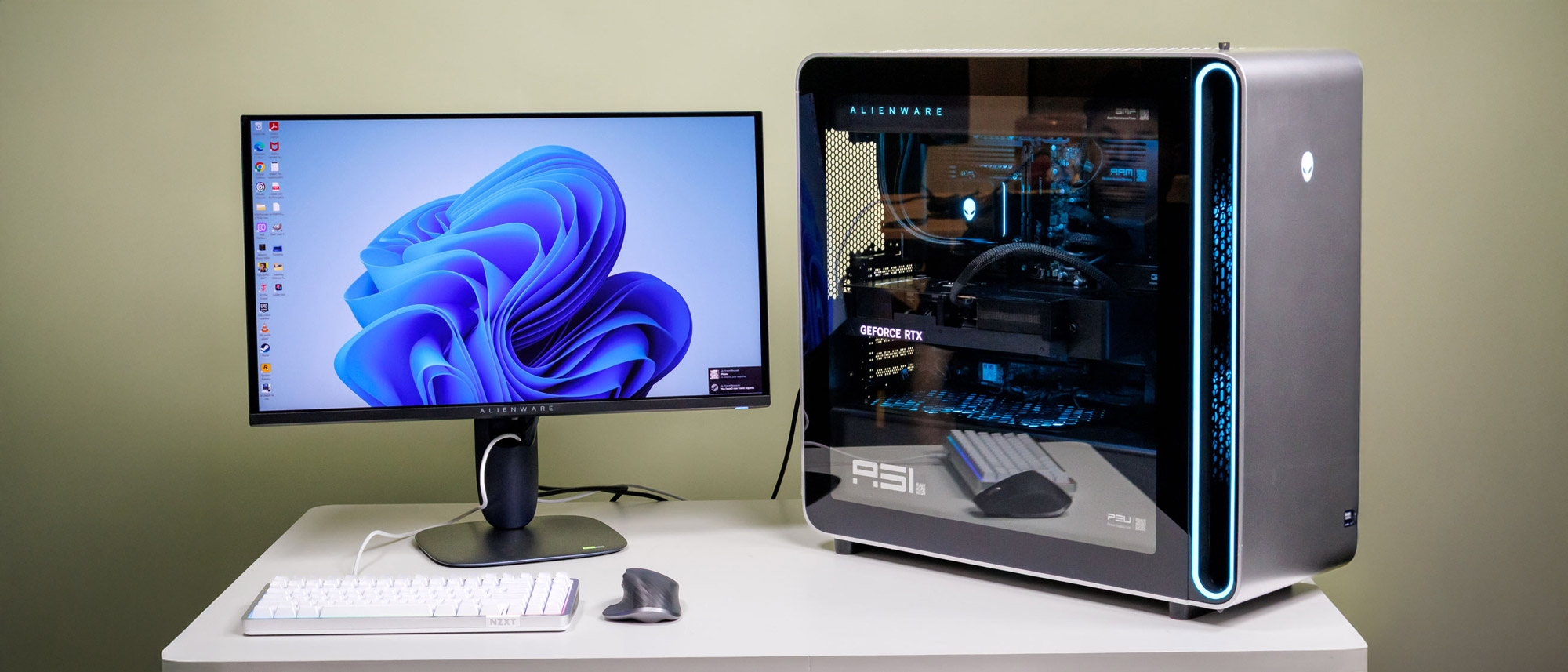LG's QNED TV lineup is getting a big shake-up for 2025 — fewer quantum dots
Big changes are coming to LG LCD TVs

Over the last decade, LG has earned a reputation for making some of the best OLED TVs money can buy. Even folks who don’t follow the ins and outs of the TV industry associate the LG name with OLED display technology.
But OLEDs are only part of the story. LG has been a perennial purveyor of LCD TVs, too — they just don’t get as much attention. This year, LG is trying to change that. It's trying to revive its LCD TV lineup by getting away from quantum dots on some models in favor of something called Dynamic QNED Color Solution. If it’s successful, LG's 2025 QNED TV lineup could prove to be tough competition for QLED TVs from Hisense, Samsung, Sony and TCL.
I recently had a private look at LG’s QNED lineup and spoke with its TV Product Planning Team about the new lineup. I had plenty of questions, but first among them was this: How can LG QNEDs compete with QLEDs while moving away from quantum dots in specific models (it'll still use the tech on several TVs, so it's not a complete shift).
What is Dynamic QNED Color Solution?

LG is folding its “evo” designation — made popular by LG OLED evo TVs — into the QNED side of its lineup. Going forward, LG QNED evo TVs will sit alongside LG OLED evo TVs and share many of the same features and philosophies. But before we get into those similarities, let’s talk about what’s not here in some models: quantum dots.
For as far back as I can remember, these color-boosting nanocrystals have been synonymous with improved picture quality. You can trace the benefits of quantum dots across several years of engineering, on both LCD and OLED TVs alike. Thanks to this proven track record (particularly in the LCD space), the inclusion of quantum dots signals better color volume and a brighter, punchier picture than what you might see on a TV without them.
LG QNED evo TVs will sit alongside LG OLED evo TVs and share many of the same features.
In 2025, some LG QNED TVs won’t come with quantum-dot color. On these models, they've been replaced with a suite of hardware- and software-based components that LG has dubbed Dynamic QNED Color Solution.

Not much has been revealed about the precise manner in which Dynamic QNED Color Solution works and LG remained tight-lipped about the tech throughout my time touring the showroom. In a press release, LG Electronics states that “fluorescent elements are used to convert blue light to white, absorbing and purifying unnecessary waves of light,” and that the technology “enables light from the backlight to be expressed in pure colors.”
We won’t know how Dynamic QNED Color Solution stacks up to traditional quantum-dot color until we test some of these TVs for ourselves. However, we do know that it’ll be available across all of LG’s QNED TVs in 2025, including the QNED85 and QNED9M (which feature standard LED backlighting), as well as the QNED92 (LG’s flagship Mini-LED TV).
Sign up to get the BEST of Tom's Guide direct to your inbox.
Get instant access to breaking news, the hottest reviews, great deals and helpful tips.
Like LG OLEDs, QNED evo TVs will emphasize personalization
In talking with representatives from LG Electronics, it became clear that one of the guiding principles in 2025 across all LG TVs — not just QNEDs — is to make the TV experience more in line with the experience of using a smartphone. The key, according to LG, is the brand’s focus on personalization.
Like the brand's newest OLED TVs, LG QNEDs offer new ways to personalize the viewing experience across multiple user profiles. Each profile can be customized to fit that user's preferences, from picture and audio settings to content recommendations.
There are a number of ostensibly AI-based features that aim to facilitate the personalization process. Voice ID recognizes who's using the TV by identifying the sound of their voice and swapping profiles automatically. AI Chatbot leverages Large Language Models to troubleshoot common issues or to locate certain settings.
I remain skeptical of AI-based enhancements in TVs, so I'm reserving judgment about these features until I can test them out personally. That said, LG showed off another new addition to its 2025 QNED lineup whose usefulness I needn't be skeptical of: wireless functionality.
LG's wireless Zero Connect Box is coming to QNED evo

Until now, LG’s wireless technology has been an exclusive feature of its very pricey M Series OLED TV. This year, the LG Zero Connect box (the piece of hardware that makes wireless transmission possible) is coming to LG’s QNED evo lineup.
The Zero Connect box gives users the freedom to arrange their connected devices with more flexibility, as it can be stored anywhere within ten meters of the TV while transmitting a 4K signal at up to 144Hz. This year, the tech will make its debut on an LCD TV when it ships with the QNED9M QNED TV.
I must admit, this technology is quite impressive. During a live demo, I never witnessed a single stutter or visual artifact on screen while the Zero Connect box was in use. Still, it will likely be a few years before it finds its way to additional models.
LG QNED evo: outlook
In all likelihood, LG will continue to dominate the OLED marketplace for the foreseeable future. Samsung and Sony engineer incredible OLED TVs of their own, but LG has built up its reputation in this space for over a decade, and the sale numbers speak for themselves.
Its QNED TVs, on the other hand, have not had the same success in the face of stiff competition. In this context, it makes sense that the brand has decided to move beyond quantum dots. However, if LG is serious about making QNED a household name, it begins and ends with Dynamic QNED Color Solution. You can set aside AI features and wireless functionality — if these QNEDs look and sound good, people will take notice.
More from Tom's Guide

Michael Desjardin is a Senior Editor for TVs at Tom's Guide. He's been testing and tinkering with TVs professionally for over a decade, previously for Reviewed and USA Today. Michael graduated from Emerson College where he studied media production and screenwriting. He loves cooking, zoning out to ambient music, and getting way too invested in the Red Sox. He considers himself living proof that TV doesn't necessarily rot your brain.
